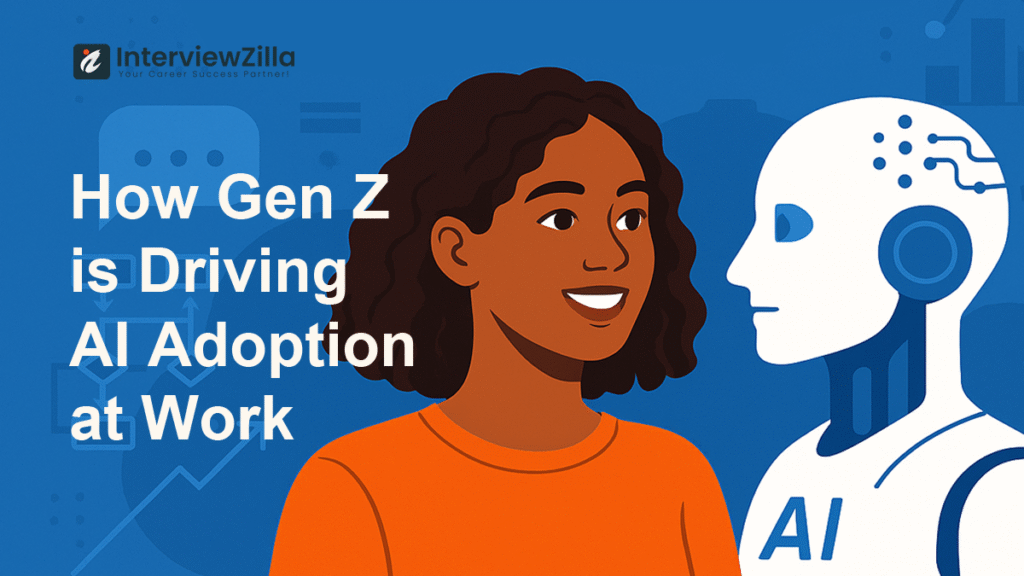Prepare for your Docker Interview Questions with our comprehensive guide. This article features key questions, detailed answers, and practical examples. Covering topics like containerization, Docker file, orchestration, and best practices, it’s perfect for all experience levels. Master Docker concepts and ace your interview with confidence.
How does Docker works
Here's a simplified diagram to illustrate how Docker works:
+-------------------+ +---------------------+
| | Docker | |
| Docker Host | ------------> | Docker Containers |
| | | |
+-------------------+ +---------------------+In this diagram:
- Docker Host: This is your server or computer where Docker is installed. It could be a physical server or a virtual machine running on AWS, for example.
- Docker Containers: These are the isolated environments where your applications run. Each container has its own filesystem, networking, and processes, but they all share the same kernel with the Docker Host. Containers are created from Docker images, which contain everything needed to run the application.
When you use Docker, you interact with the Docker Host using simple commands to manage containers. For example, you can use commands like docker run to start a new container, docker stop to stop a running container, and docker build to create a new Docker image.
AWS services like AWS Fargate, Amazon ECS, Amazon EKS, and AWS Batch provide managed environments for running and orchestrating Docker containers at scale. These services handle tasks like provisioning infrastructure, managing clusters of Docker hosts, and scaling containers based on demand, allowing you to focus on developing and deploying your applications.
Docker Interview Questions and Answers for Experienced
Q1. What is Docker?
Ans: Docker is a platform that enables developers to develop, ship, and run applications in containers. Containers are lightweight, portable, and self-sufficient environments that encapsulate everything needed to run an application, including code, runtime, system tools, and libraries. Docker provides tools and a platform to manage these containers efficiently across different environments.
Q2. How do Docker daemon and the Docker client communicate with each other?
Ans: Docker daemon and Docker client communicate with each other using a REST API over UNIX sockets or a network interface. The Docker client sends commands to the Docker daemon, which then performs the requested actions, such as building, running, or stopping containers.
Q3. Can a container restart on its own?
Ans: Yes, a container can restart on its own depending on the restart policy set during container creation. Docker provides restart policies such as "no", "on-failure", and "always", which dictate the conditions under which a container should be restarted.
Example: Setting a restart policy to "always" ensures that the container restarts automatically whenever it exits, regardless of the exit status.
Q4. What is Docker Swarm?
Ans: Docker Swarm is a native clustering and orchestration tool provided by Docker. It allows users to create and manage a cluster of Docker hosts, called nodes, to deploy and scale containerized applications across multiple machines. Swarm provides features for service discovery, load balancing, and high availability.
Q5. How do you find stored Docker volumes?
Ans: To find stored Docker volumes, you can use the docker volume ls command, which lists all volumes on the Docker host.
Example: docker volume ls
Q6. What is the difference between Docker container and a Kubernetes pod?
Ans: A Docker container is a single instance of a runnable application encapsulated in a container, whereas a Kubernetes pod can consist of one or more containers that share networking and storage resources. Pods are the smallest deployable units in Kubernetes, providing a way to group and manage containers together.
Q7. How do you check the versions of Docker Client and Server?
Ans: You can check the version of the Docker client and server using the docker version command. This command provides detailed information about the client and server versions, including build information and API versions.
Example: docker version
Q8. How do you inspect the metadata of a Docker image?
Ans: You can inspect the metadata of a Docker image using the docker inspect command followed by the image name or ID. This command provides detailed information about the image, including its configuration, layers, and labels.
Example: docker inspect <image_name_or_id>
Q9. What are Docker’s most notable features?
Ans: Docker's most notable features include:
- Containerization: Packaging applications and dependencies into isolated containers.
- Portability: Consistent environment across different infrastructure and platforms.
- Scalability: Efficient scaling of applications using container orchestration tools like Docker Swarm or Kubernetes.
- Resource Efficiency: Lightweight containers with minimal overhead.
- Developer Productivity: Rapid development, testing, and deployment workflows enabled by containerization.
Q10. What is the purpose of the "docker exec" command?
Ans: The docker exec command is used to run commands inside a running Docker container. It allows users to execute commands interactively or non-interactively within the container's environment.
Example: docker exec -it <container_name_or_id> bash (to start an interactive bash session inside the container)
Q11. What platforms can you run Docker on?
Ans: Docker can be run on various platforms, including:
- Linux (Ubuntu, CentOS, etc.)
- macOS
- Windows
- Cloud platforms (AWS, Azure, Google Cloud)
- On-premises data centers
Q12. What is a DockerFile?
Ans: A Dockerfile is a text file that contains instructions for building a Docker image. It defines the steps needed to create a reproducible image that can be used to run containers. Dockerfiles include commands to specify the base image, install dependencies, copy files, set environment variables, and define the entry point for the container.
Q13. How about a command to stop the container?
Ans: To stop a container, you can use the docker stop command followed by the container name or ID.
Example: docker stop <container_name_or_id>
Q14. Describe a Docker container’s lifecycle?
Ans: A Docker container's lifecycle includes several stages:
- Creation: Creating a container from an image using the
docker createordocker runcommand. - Running: Starting the container using the
docker startcommand. - Paused: Pausing the container's processes using the
docker pausecommand. - Stopped: Stopping the container using the
docker stopcommand. - Deletion: Removing the container using the
docker rmcommand.
Q15. What is docker image registry?
Ans: A Docker image registry is a repository for storing and sharing Docker images. It serves as a central location where Docker images can be pushed, pulled, and managed. Popular Docker image registries include Docker Hub, Amazon ECR, Google Container Registry, and Azure Container Registry.
Q16. How do you pass environment variables to a Docker container?
Ans: You can pass environment variables to a Docker container using the -e or --env option with the docker run command followed by the variable name and value.
Example: docker run -e VARIABLE_NAME=variable_value <image_name>
Q17. What are the benefits of using Docker in a microservices architecture?
Ans: The benefits of using Docker in a microservices architecture include:
- Isolation: Each microservice runs in its own container, ensuring isolation of dependencies and resources.
- Scalability: Docker containers can be easily scaled up or down to handle varying workloads.
- Flexibility: Microservices can be developed, deployed, and updated independently, allowing for greater agility.
- Resource Efficiency: Docker containers have minimal overhead, making efficient use of resources.
- Consistency: Docker ensures consistent environments across development, testing, and production.
Q18. What is a Docker Container?
Ans: A Docker container is a lightweight, standalone, and executable package that includes everything needed to run a piece of software, including code, runtime, system tools, libraries, and settings. Containers are isolated from each other and from the underlying host system, providing consistency and reproducibility across different environments.
Q19. What can you tell about Docker Compose?
Ans: Docker Compose is a tool for defining and running multi-container Docker applications. It uses a YAML file to configure the services, networks, and volumes required for an application, allowing developers to define complex application architectures in a single file. Docker Compose simplifies the process of managing and orchestrating multi-container applications locally or in development environments.
Q20. What is the difference between virtualization and containerization?
Ans: Virtualization involves running multiple virtual machines (VMs) on a single physical machine, each with its own operating system and resources. Containerization, on the other hand, involves running multiple containers on a single host operating system, sharing the same kernel and utilizing lightweight isolation mechanisms. Virtualization provides stronger isolation but comes with higher resource overhead, while containerization offers lightweight and efficient packaging but with less isolation.
Q21. What is the docker command that lists the status of all docker containers?
Ans: The docker ps command lists the status of all running Docker containers by default. To list all containers, including those that are stopped, you can use the docker ps -a command.
Q22. How do you scale Docker containers horizontally?
Ans: Docker containers can be scaled horizontally by deploying multiple instances of the same container across multiple hosts using container orchestration tools like Docker Swarm or Kubernetes. These tools manage the deployment, scaling, and load balancing of containers to ensure high availability and efficient resource utilization.
Q23. What are Docker object labels?
Ans: Docker object labels are key-value pairs that can be attached to Docker objects such as images, containers, volumes, networks, and services. Labels provide metadata that can be used for organizing, querying, and managing Docker objects. They are commonly used for specifying attributes, version information, environment settings, and other custom metadata.
Q24. What is the difference between the CMD and ENTRYPOINT instructions in a Dockerfile?
Ans: The CMD instruction in a Dockerfile specifies the default command to run when a container is started, while the ENTRYPOINT instruction specifies the executable that will be run when the container is started. If both instructions are present, the CMD arguments will be passed as arguments to the ENTRYPOINT command.
Q25. How many Docker components are there?
Ans: There are three main Docker components:
- Docker Engine: The runtime that runs and manages containers.
- Docker Client: The command-line interface used to interact with Docker Engine.
- Docker Registry: A repository for storing and sharing Docker images.
Q26. What do you know about the Docker system prune?
Ans: Docker system prune is a command used to clean up unused resources, including containers, networks, images, and volumes. It removes all stopped containers, unused networks, and dangling images, reclaiming disk space and improving system performance.
Q27. What are the more advanced Docker commands and what do they do?
Ans: Some advanced Docker commands include:
docker network: Manages Docker networks, allowing containers to communicate with each other.docker volume: Manages Docker volumes, providing persistent storage for containers.docker build: Builds a Docker image from a Dockerfile.docker push: Pushes a Docker image to a registry.docker pull: Pulls a Docker image from a registry.
Q28. Can you lose data stored in a container?
Ans: Yes, data stored in a container can be lost if the container is removed or if the underlying storage is not persistent. To ensure data persistence, it is recommended to use Docker volumes or bind mounts to store data outside the container.
Q29. What is the functionality of a hypervisor?
Ans: A hypervisor is a software layer that enables multiple operating systems to share a single physical hardware host. It provides virtualization by abstracting the underlying hardware and creating virtual machines (VMs) that can run guest operating systems independently of each other.
Q30. How would you list all of the containers currently running?
Ans: To list all containers currently running, you can use the docker ps command.
Example: docker ps
Q31. What about the opposite? Does Docker have any downsides?
Ans: While Docker offers numerous benefits, it also has some downsides, including:
- Learning Curve: Docker has a steep learning curve, especially for beginners.
- Security Concerns: Containers share the same kernel, which can pose security risks if not properly configured.
- Resource Overhead: Running multiple containers can consume significant resources, especially on resource-constrained systems.
- Complexity: Managing large-scale containerized environments can be complex and require additional tools and expertise.
Q32. What is Docker’s namespace?
Ans: Docker's namespace is a feature that provides isolation for containers by creating separate namespaces for processes, networks, users, and filesystems. This ensures that containers are isolated from each other and from the host system, preventing interference and conflicts.
Q33. How do you pass environment variables to a Docker container?
Ans: You can pass environment variables to a Docker container using the -e or --env option with the docker run command followed by the variable name and value.
Example: docker run -e VARIABLE_NAME=variable_value <image_name>
Q34. What’s involved in scaling a Docker container?
Ans: Scaling a Docker container involves deploying multiple instances of the same container across multiple hosts using container orchestration tools like Docker Swarm or Kubernetes. These tools manage the deployment, scaling, and load balancing of containers to ensure high availability and efficient resource utilization.
Q35. Name the essential Docker commands and what they do?
Ans: Some essential Docker commands include:
docker run: Creates and starts a new container based on a Docker image.docker build: Builds a Docker image from a Dockerfile.docker pull: Pulls a Docker image from a registry.docker push: Pushes a Docker image to a registry.docker ps: Lists running containers.docker logs: Displays logs from a container.
Q36. Does Docker provide support for IPV6?
Ans: Yes, Docker provides support for IPv6 networking. IPv6 can be enabled and configured for Docker containers and services, allowing them to communicate over IPv6 networks.
Q37. What is the difference between Docker restart policies "no", "on-failure", and "always"?
Ans:
- "no": Specifies that the container should not be restarted automatically.
- "on-failure": Specifies that the container should be restarted automatically only if it exits with a non-zero exit code.
- "always": Specifies that the container should be restarted automatically whenever it exits, regardless of the exit status.
Q38. What is a Docker container’s lifecycle?
Ans: A Docker container's lifecycle includes several stages:
- Creation: Creating a container from an image using the
docker createordocker runcommand. - Running: Starting the container using the
docker startcommand. - Paused: Pausing the container's processes using the
docker pausecommand. - Stopped: Stopping the container using the
docker stopcommand. - Deletion: Removing the container using the
docker rmcommand.
Q39. What are the more advanced Docker commands and what do they do?
Ans: Some advanced Docker commands include:
docker network: Manages Docker networks, allowing containers to communicate with each other.docker volume: Manages Docker volumes, providing persistent storage for containers.docker build: Builds a Docker image from a Dockerfile.docker push: Pushes a Docker image to a registry.docker pull: Pulls a Docker image from a registry.
Q40. Which is the best method for removing a container: the command “stop container” followed by the command “remove the container,” the rm command by itself?
Ans: The best method for removing a container depends on the specific use case:
- If you want to stop and remove a container in one step, you can use the
docker rm -fcommand. - If you want to stop a container first and then remove it, you can use the
docker stopcommand followed by thedocker rmcommand.
Example: docker stop <container_name_or_id> followed by docker rm <container_name_or_id>
Click here for more related topics.
Click here to know more about Docker.


